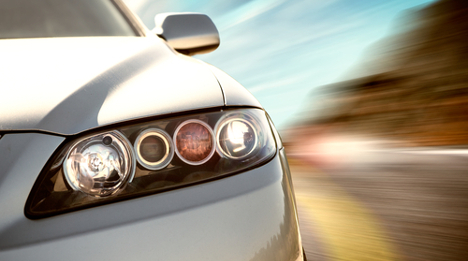3 Factors That Play into Used-Car Impact of Redesigns

By subscribing, you agree to receive communications from Auto Remarketing and our partners in accordance with our Privacy Policy. We may share your information with select partners and sponsors who may contact you about their products and services. You may unsubscribe at any time.
MCLEAN, Va. –
Redesigns. Yes, this term is perhaps more exciting for the new-car market, but it seems waves of updated models impact the used market heavily, as well.
In NADA Used Car Guide’s latest white paper, titled, “How Redesigns Affect Used Vehicle Prices,” analysts discovered redesigns can play a large role in how used values pan out for models.
NADA UCG broke it down into three factors:
- The number of years since the last redesign
- Amount of competition within the vehicle’s segment
- The quality of the design
According to NADA data, 1-year-old vehicles are typically 15 to 20 percent more expensive than 2-year-old vehicles.
But for redesigned 1-year-old vehicles, add an additional 15 to 20 percent premium on top of those figures, said NADA UCG analysts.
Jonathan Banks, executive analyst for NADA UCG, offered the following example to illustrate these findings:
Subscribe to Auto Remarketing to stay informed and stay ahead.
By subscribing, you agree to receive communications from Auto Remarketing and our partners in accordance with our Privacy Policy. We may share your information with select partners and sponsors who may contact you about their products and services. You may unsubscribe at any time.
"Let's say you have a 2-year-old car worth $20,000. Your neighbor has the same model of car as you, but his car is only a year old, and has gone through a newer, extensive redesign. Your neighbor's car would be worth $27,000 — or about 35 percent more than yours." Banks said. "The price of the newer, redesigned 1-year-old used car holds considerably more value due to the fresher, redesigned look over your car, even though the two cars are only a year apart from one another."
According to the report, there are several factors that influence just how much redesigns can serve to push used values up.
First, lifecycle duration. In other words, products are known to become less valuable as their design becomes older and less exciting.
According to NADA UCG, on average, a model’s used value drops 1.4 percent every year it carries the same design.
But there’s a caveat.
“NADA has found that, depending on the extend of the change, more substantial refreshes can reduce but not remove the impact of design aging, while minor refreshes have no significant impact,” the report stated.
The second most influential factor that plays into the way redesigns impact used values is “competitive concentration”, the report said.
NADA analysts found that redesign value is higher amid segments with more competition on a small percentage of models, while values stay more level in segments where competition is more evenly distributed.
For example, take a look at the luxury midsize car segment. According to the report, two models out of 16 — the BMW 5 Series and Mercedes-Benz E Class — make up about 50 percent of the segment’s new sales.
On the other hand, in the compact utility segment, five models out of 20 make up 50 percent of new sales.
NADA UCG found that among the heavily concentrated segments, redesigns bumped used pricing up by 3 to 4 percent,
"Essentially, redesign impact is more significant in situations when relatively few models capture the attention of the majority of consumers because redesigns stand out much more clearly. This makes intuitive sense as well. It’s much more likely that a redesign in the hypercompetitive midsize car segment (Ford Fusion, Honda Accord, etc.) will receive less attention, and consequently generate less of an impact, than in the decidedly less competitive luxury large car segment (BMW 7 Series, Mercedes S-Class, etc.),” the report explained.
Lastly, not surprisingly, design quality plays the largest role in deciding whether redesigns will positively impact used values — though this factor is a bit more difficult to gauge. The report offers a chart outlining highly successful redesigns that illustrate the role design quality plays in greater detail.
This type of analysis will be particularly relevant next year, when a whopping 34 redesigns are expected by year-end, which beats the 22-vehicle average since 1989, NADA pointed out.


